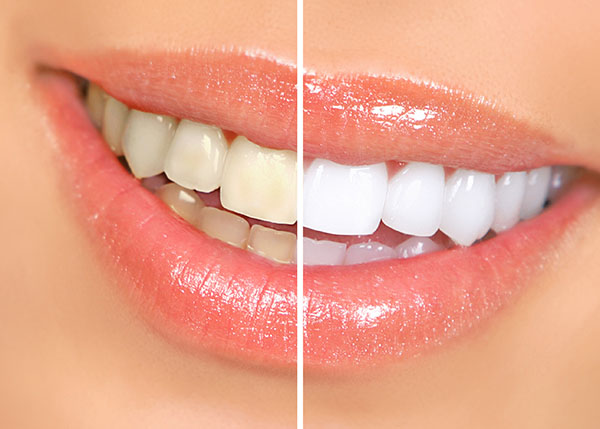What Can I Do to Improve My Smile Los Angeles, CA
Your smile is a powerful tool. You can convey a wealth of information to others with a single grin, and research shows that the physical act of smiling can even make you feel happier. Many people may feel self-conscious about their smiles because of concerns about the appearance of their teeth or gum tissue.
Fortunately, many dentists offer restorative services that can help you feel more comfortable about sharing your smile with the world. For more information about how to improve your smile, our team at Dr. Robert B Tamaki, DDS in Los Angeles is here to help. Call us at (310) 402-0156 to learn more or schedule an appointment.
The Benefits of an Improved Smile
Patients who deliberately work to improve their smile are more likely to smile freely, which can have many benefits. Researchers have shown that the physical act of smiling can make you feel happier through a hypothesis known as facial feedback. According to the facial feedback hypothesis, when the facial muscles form into a smile, it can trigger feelings of actual happiness in the brain.
Beyond the positive inward impact of a smile, smiling can also positively affect others. Research published in the journal Brain Science has also demonstrated that people who smile more often have happier relationships and are rated more favorably by others. The same researchers have also posited that people who smile more live longer.
“According to the facial feedback hypothesis, when the facial muscles form into a smile, it can trigger feelings of actual happiness in the brain.”
Finding the Right Dentist
Patients that decide they would like to improve their smile may easily get stuck in the contemplation phase. Actively researching a dentist who can improve smiles is the first step in reaping positive benefits.
One of the most important factors that play into the search process for a restorative dentist is trust. When the patient finds a dentist they trust – this is accomplished by word of mouth and online research – they can work together to decide what type of procedure feels comfortable for them.
Other factors that should go into the search for a dentist include:
- Education and credibility
- Reputation
- Cost of procedures
- Body of work (ask to see before and after photos)
- Ease of scheduling
When researching a dentist, make sure to follow intuition. Do not feel pressured or strong-armed into a procedure that does not feel right.
“Do not feel pressured or strong-armed into a procedure that does not feel right.”
How to Maintain a Healthy Smile
Whether or not a patient decides to pursue a restorative dental treatment to improve their smile, there are many habits that they can adopt immediately to optimize and maintain their current smile.
The American Dental Association notes that the most important thing to maintain adequate teeth and gum health and the quality of a smile is to brush twice daily and floss once daily.
Other ways to improve the quality of a smile include:
- Abstaining from smoking cigarettes or chewing tobacco
- Reducing your exposure to substances that stain teeth, like coffee or red wine
- Avoiding tooth decay by drinking water, especially after eating sugary foods
- Protecting your teeth with mouth guards during contact sports
To learn more about optimizing the health of your smile, ask Dr. Robert B Tamaki, DDS for personalized tips at the next routine visit.
“Other ways to improve the quality of your smile include: Abstaining from smoking cigarettes or chewing tobacco.”
Check out what others are saying about our dental services on Yelp: What Can I Do to Improve My Smile in Los Angeles, CA
How Restorative Dentistry Can Improve Smiles
A restorative dental process takes into account the teeth's function as well as their appearance. People who may benefit from restorative dentistry include those with missing teeth, teeth that have decayed, broken or chipped teeth.
A restorative dentist can help improve the function of teeth and the appearance of a smile simultaneously. Some common types of procedures utilized by a restorative dentist include:
- Fillings: A filling can repair a defect in a tooth that has been caused by decay or trauma. Restorative dentists can use filling materials that closely match the color of natural teeth for an ideal appearance.
- Crowns: A crown is a cap that fits snugly over a tooth to correct its shape and size. Restorative dentists can use crowns to correct the appearance and function of a damaged tooth.
- Implants: A dental implant is a metal piece that is inserted into the bone socket and can help correct defects from missing teeth. A crown can be fitted onto an implant.
- Bridges: A dental bridge is a partial denture permanently anchored in the mouth and can help restore gaps left behind by missing teeth.
- Veneers: A dental veneer is a thin shell placed at the tooth’s surface to correct a tooth’s color, size, or shape.
Patients who have a dental restoration performed should ask Dr. Robert B Tamaki, DDS about how to manage their restoration afterward. Depending on the type of work performed, they may be advised to avoid foods that are of certain textures or temperatures for a specific period.
“A restorative dentist can help improve the function of the teeth and the appearance of a smile simultaneously.”
Questions Answered on This Page
Q. What are the benefits of an improved smile?
Q. How should I go about finding a restorative dentist?
Q. What can I do to improve my smile?
Q. What types of restorative dental procedures are available?
Q. What is the difference between restorative dentistry and cosmetic dentistry?
People Also Ask
Q. Why should someone see a cosmetic dentist?
Q. How long does teeth whitening treatment take?
Q. What are teeth whitening options at the dentist?
Q. What are the common cosmetic dental services?
How Cosmetic Dentistry Can Improve Smiles
It is easy to confuse restorative and cosmetic dentistry, as the fields have many features in common. Both types of dentistry use procedures to alter the appearance of teeth, but cosmetic dentistry is specifically focused on boosting the aesthetic appearance of the teeth and related structures.
Cosmetic dentists use several procedures, such as teeth whitening, dental bonding, and periodontal plastic surgery, to provide natural-looking alterations to a patient's smile. A quick aesthetic update can make a big difference in a person's smile. There are a variety of procedures used by cosmetic dentists on the American Academy of Cosmetic Dentistry's website.
“Cosmetic dentists use several procedures, such as teeth whitening, dental bonding, and periodontal plastic surgery, to provide natural-looking alterations to a patient’s smile.”
Frequently Asked Questions
Q. Why would a person have a cosmetic bonding procedure?
A. According to the American Academy of Cosmetic Dentistry, the most common reason that dentists use bonding is to repair a patient's chipped tooth. When bonding a tooth, dentists use specific materials that closely match the natural color of the surrounding teeth. This may make a big difference in the appearance of the formerly chipped tooth and the overall smile.
Q. Does insurance pay for cosmetic dentistry?
A. Because cosmetic dentistry services are elective (meaning that they are not determined to be a medical necessity), they are not always covered by insurance. The cost of a cosmetic dentistry procedure ranges depending on the number of teeth involved and the technique. Make sure to discuss your desires with your dentist to see what type of investment may be right for you.
Q. Will it be obvious that I have had work done to improve my smile?
A. The extent to which you want to enhance your smile is entirely up to you. If you elect to have dental extractions and implants, or veneers, they may dramatically improve your smile in a way that may be apparent to people who knew you previously. There are many options available that are subtler. Whatever you choose, your dentist may be able to help you visualize the outcome beforehand, whether through imaging models or direct placement on your teeth.
Q. How long do veneers last?
A. According to the American Academy of Cosmetic Dentistry, a porcelain veneer can have a life that ranges between seven and twenty years. Veneers will last longer if they receive proper oral care, including careful attention not to bite down hard on non-food items.
Q. What is the best order of treatment to improve my smile?
A. The most important treatments should be done before any cosmetics. We advise starting with restorative treatments that help restore oral function, such as any fillings and replacement procedures. Next, we like to focus on orthodontics to help straighten the teeth and correct any jaw displacement. Lastly, cosmetic procedures, such as teeth whitening or veneers, can be done.
Cosmetic Dentistry Terminology
Call Us Today
Improving your smile can help you look as good as you feel. We at Dr. Robert B Tamaki, DDS can help. Call us today at 310-402-0156 to schedule an appointment or learn more about our services.
Helpful Related Links
- American Dental Association (ADA). Glossary of Dental Clinical Terms. 2024
- American Academy of Cosmetic Dentistry® (AACD). Home Page. 2024
- WebMD. WebMD’s Oral Care Guide. 2024
About our business, license, and website security
- Dr. Robert B Tamaki, DDS was established in 1985.
- We accept the following payment methods: Cash, CareCredit, Check, MasterCard, and Visa
- We serve patients from the following counties: Los Angeles County
- We serve patients from the following cities: Los Angeles, Santa Monica, Venice, Marina Del Rey, Redondo Beach, Hermosa Beach, Manhattan Beach, and Westchester
- CA (License #DDO-33386). View License Information and Specifics
- National Provider Identifier Database (1568559011). View NPI Registry Information
- Healthgrades. View Background Information and Reviews
- Norton Safe Web. View Details
- Trend Micro Site Safety Center. View Details
Back to top of What Can I Do to Improve My Smile











